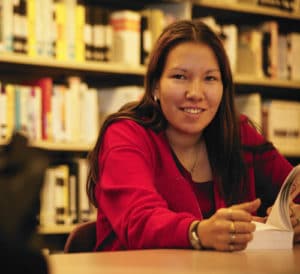About 2 million Native Americans/Native Alaskans live in the United States. Out of this statistic, about 15% of them have a substance abuse disorder. This statistic is double in comparison to some other ethnicities.
Native American women are prone to drug and alcohol dependency. This is even more true for when they are children or teenagers. Intervention and education are crucial to stop Native American substance abuse in women.
Wellbriety certified centers are treatment centers that draw on Native American culture. They use modern and ancient practices for recovery. Both combined let Native American women recover successfully and safely.
History of Native American Substance Abuse
 Native Americans have always had a relationship with alcohol. However, centuries ago it was a healthy one. To clarify, its use was strictly for ceremonies. Drinking wasn’t recreational. So, alcohol played a small part in a large purpose.
Native Americans have always had a relationship with alcohol. However, centuries ago it was a healthy one. To clarify, its use was strictly for ceremonies. Drinking wasn’t recreational. So, alcohol played a small part in a large purpose.
However, European colonists changed the relationship between alcohol and Native Americans. Early documentation shows that they introduced Native Americans to substance abuse. These colonists showed them alcohol they had never seen before, like wine and distilled spirits.
Colonists would heavily pressure them into drinking with them. Firstly, they did this to loosen them up about trades. They would trade alcohol for entire plots of land and essentials for survival. Secondly, they would make them drink to the point of addiction. American Indians began to depend on them for their addiction. European colonists were happy to oblige.
Native Americans unconsciously became addicted to these foreign drinks. Elder tribe members saw the danger of alcohol. They decided to take action through sobriety circles.
The elements of sobriety circles:
- Calling upon a higher power for help
- Forming a sacred circle to keep evil spirits away
- Rejection of alcohol to get back to ancestral roots
- Replacing alcohol with plants like sage and cedar
- Storytelling
- Asking for forgiveness from friends and family
In short, sobriety circles can be seen as the first substance use disorder treatment. It’s important to note that the elements above may differ per tribe. Also, the history of Native American substance abuse is much more complicated. Similarly, the 12-step program Alcoholics Anonymous has overlapping features. Likewise, they both draw on help from a higher power. The circle in their logo is from the idea of sobriety circles.
Native American Substance Abuse Disorder Recovery
Addiction recovery in terms of Native American substance abuse can pose a unique set of problems. The community in which they live might be small. They could worry about judgment. A small circle of peers could reject them if they don’t understand that substance use disorder is a medical condition.
Treatment in itself is unique for Native Americans. Some addiction recovery treatment centers aren’t a good fit. Some indigenous Americans could want to be at a center that they have a cultural connection toward.
Basic Steps for Native American Substance Abuse Recovery
- Firstly, they must admit they have the problem. That substance use has taken over their life. It will take their life if they don’t get help.
- Reach out to loved ones for support. When someone loves a person, they will want to help them without judgment. After all, they care deeply about the person. Then, they should reach out to them through the process of recovery. Recovering addicts need healthy support to keep them on a sober path.
- Cut out any negative influences. People who encourage a person’s addiction to drugs and alcohol don’t deserve their love.
- Look to a higher power. Indigenous Americans have a deep spiritual connection. Their ancestors from centuries ago were able to overcome addiction with self-discipline and spiritualism. This path may not be for everyone, since each person has their own belief system.
- Look into Native American treatment centers. They specialize in Native American substance abuse. They will incorporate proven methods in tandem with cultural heritage to aid recovery. A personalized plan is always the best option.
- Write down the pros and cons of each form of treatment. Consider how long it will take and the cost. Representatives from Native American treatment centers can help this process.
- Finalize which treatment center to go to. This is the most important step to a safe recovery.
- Finally, practice unconditional self-love at all times. Relapse happens to many people who embark on the road to recovery. Substance use is a medical condition. A person should never blame where they are at in their journey as long as they continue on it.
Not a single person’s addiction recovery journey looks the same. These steps might reorder for each person. Most importantly, they need to get help. They need to decide they will take their health into their own hands.
How Poverty and Substance Abuse Are Related
Native American people are often lumped together in research. At first, they were the vast majority in the United States. After colonialism, 90% of the American indigenous population was wiped out. Now their population is so small in the United States they are labeled as “other” in many studies. These historical events have left Native American women impoverished.
Poverty and substance abuse have a strong relationship. Data from 2003 suggests that 38% of Americans who are homeless deal with alcoholism. With this, 26% of people from this group have a substance abuse disorder.
Impoverished people can’t pay for addiction treatment. In 2011, 37.3% of people surveyed that needed addiction recovery couldn’t afford it. They didn’t have health insurance or the means to do it. Native American women deal with a similar issue as a whole.
How Do Poverty and Substance Abuse Oppress Native American Women?
Every year, the U.S. has an Equal Pay Day. Yet, in 2019 the National Indian Council on Aging (NICOA) found alarming information. Native American women earned $0.57 for every dollar earned by non-Hispanic white men. This number is worse than the year before.
Further, this lack of pay adds up over time. A projection of this fact shows that Native American women make $406,760 less than men over a 40-year career. In addition, they only make $34,466 a year on average at a full-time job. The pay is abysmal even with a master’s degree.
Native American women might develop a substance abuse disorder for many reasons out of their control:
- They seek drugs and alcohol to relieve a mental illness
- Prescribed medication can become addictive
- Using substances to help with pain relief
- They might try an illicit drug that is laced with something much stronger and more addictive
- Their genetics might predispose them to addiction
- An older family member might influence them to try it
A substance use disorder is out of anyone’s control without help. On the other hand, how can Native American women get help with no financial assistance? Even when highly educated, they can barely call themselves middle class.
The Affordable Care Act extends to people that need help with treatment, but not for those who use drugs illegally. Even with financial aid, they still might not be able to afford the help they need. It puts many indigenous women in a difficult situation.
Native American Substance Abuse in Adolescent Girls
Generally, Native American women have lower rates of addiction than their male counterparts. However, this is not the case for young women. American Indian girls and boys have about the same rate of substance abuse.
The National Institute on Drug Abuse funded a study to understand drug use in Native American youths. They found that adolescents who lived on reservations or close to them were at risk for drug dependency. In comparison to American youths as a whole, they found a higher rate of Native American substance abuse.
The survey was an anonymous online survey given to adolescents as young as 13. Aside from tranquilizers and amphetamines, they had a higher rate of use for every other illicit drug. Additionally, the 30-day rates were elevated in comparison.
Why Young Native American Women Use Drugs and Alcohol
- Their parents do it
- Peer pressure from their friends and family
- A desire to fit in with their peers
- Lack of education on the dangers of drugs and alcohol
- Influence from the media
- They lack self-esteem and want something to help with it
- They turn to it for temporary relief from mental illness
No matter the reason, it’s tougher to get over a substance abuse disorder at a young age. Girlhood is a crucial time to instill healthy behavior. As a matter of fact, a journal of psychiatry found the initial start of drug abuse usually occurs at this age.
How Are Native American Treatment Centers Different?
Treatment centers that focus on Native American substance abuse are different from others in many ways. They use a culturally-based approach to recovery. Treatments that specialize in Native American addiction recovery are Wellbriety certified.
In terms of a cultural approach, Native American treatment centers will use the philosophy behind the medicine wheel and have Native American employees. They will usually include a 12-step course, too. Additionally, a Native American Elder normally is a mentor and counselor. Other modes of therapies (talk and medically-assisted treatment) may be used, too.
Holistic Native American therapies may be included like the following:
- Smudging
- Pipe ceremonies
- Sweat lodges
Aftercare is always a step in Native American treatment centers. Initial recovery is important. But, every day after is a part of making the recovery stick.
Women Can Overcome Substance Abuse in Orange County
Native American substance abuse is caricatured at times, especially for women. We are Wellbriety certified to aid the unique needs of Native American women.
Women have a unique struggle against drug dependency. They were widely ignored in the past at rehabilitation centers. Statistically, fewer women than men are addicted to drugs and alcohol. That doesn’t make their plight easier.
New Directions for Women recognizes women have a different set of struggles than men. This includes the realm of addiction recovery. If you or a loved one needs to break the bond of drug dependence, contact us. We offer judgment-free support.
References:
- https://www.nicoa.org/native-american-womens-equal-pay-day/#:~:text=Native%20women%20earn%20approximately%20%24.,white%2C%20non%2DHispanic%20men
- https://www.drugabuse.gov/news-events/news-releases/2018/05/higher-rate-of-substance-use-among-native-american-youth-on-reservations
- https://www.ncbi.nlm.nih.gov/pmc/articles/PMC3746542/
- https://www.businessinsider.com/climate-changed-after-europeans-killed-indigenous-americans-2019-2
- https://www.ncbi.nlm.nih.gov/pmc/articles/PMC6761887/
- https://www.samhsa.gov/sites/default/files/topics/tribal_affairs/ai-an-data-handout.pdf
- https://whitebison.org/WellBrietyAffiliateTreatment.aspx

